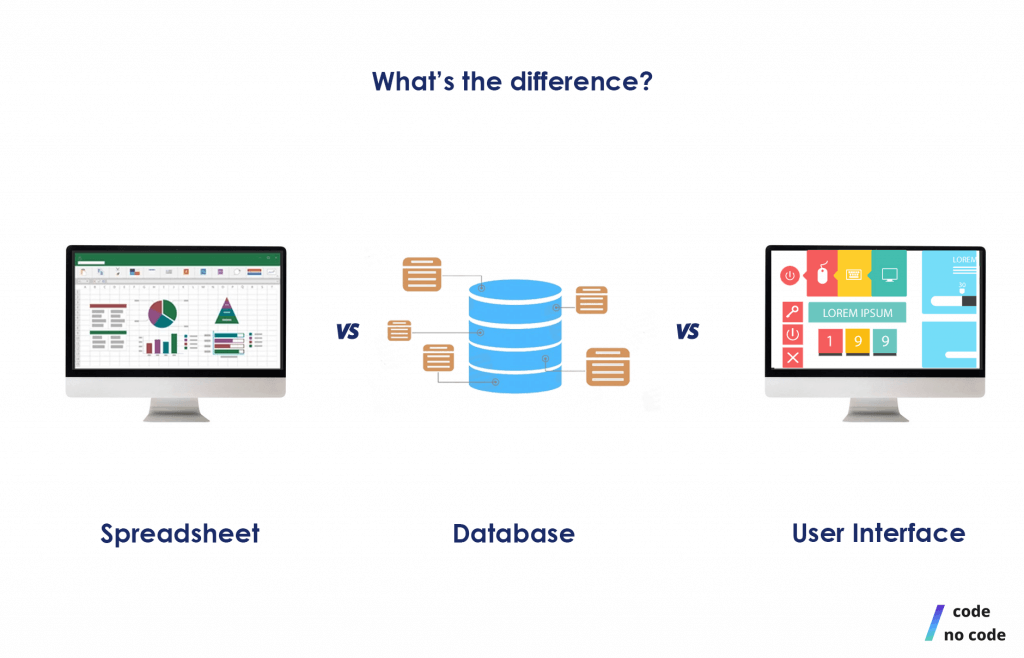Discover Exactly How Scalable Data Sources Can Be Used Without Coding to Improve Your Business Workflow
In today's hectic organization setting, the capability to manage and examine data effectively is extremely important. Scalable data sources, especially when coupled with no-code remedies, offer a transformative technique that encourages non-technical customers to improve operations. By employing tools that need no coding expertise, organizations can enhance their functional capacities while lessening reliance on IT resources. However, the actual inquiry exists in understanding just how these options can be tailored to particular organization requirements and what potential obstacles may emerge in their application. Discovering these aspects can illuminate the path to operational quality.
Comprehending Scalable Databases
Scalable data sources are essential for contemporary organization operations, allowing companies to effectively take care of enhancing volumes of data without sacrificing performance. These data sources are designed to adapt and expand to the altering demands of a business, making certain that they can handle larger datasets and more complex questions as organizational needs evolve.
Understanding scalable databases includes acknowledging their 2 main kinds: upright scaling and straight scaling. Upright scaling, or "scaling up," involves adding even more power (CPU, RAM) to an existing server to enhance efficiency. Alternatively, horizontal scaling, or "scaling out," involves including more servers to disperse the tons, which commonly causes better flexibility and fault resistance.
Another vital element is the design of scalable databases, which can be either relational or non-relational. Relational data sources, such as MySQL and PostgreSQL, are structured and use SQL for queries, while non-relational databases, like MongoDB and Cassandra, offer even more versatility with unstructured information.
Inevitably, recognizing scalable data sources is crucial for organizations intending to utilize information as a calculated property, enabling them to remain competitive in a significantly data-driven environment.

Benefits of No-Code Solutions
Unlocking the potential of no-code options empowers businesses to enhance operations and enhance efficiency without the need for substantial programs knowledge. These platforms permit non-technical users to develop, change, and take care of databases easily, hence democratizing accessibility to modern technology across teams.
One of the main advantages of no-code services is their speed of execution. Companies can promptly deploy applications and automate procedures, significantly minimizing the moment invested in advancement cycles. This agility makes it possible for organizations to react immediately to market changes and customer needs, promoting a competitive edge.
In addition, no-code systems minimize reliance on IT departments for everyday tasks, enabling technical teams to concentrate on even more complicated projects that require specialized abilities. This change not only maximizes resource appropriation however likewise promotes advancement within the organization.
Cost-effectiveness is one more advantage, as no-code remedies can lower development and maintenance expenses. By minimizing the need for coding know-how, business can harness the capabilities of their existing labor force without the overhead of working with extra workers.
Popular No-Code Data Source Tools
The surge of no-code options has actually resulted in the development of various data source tools that provide to services looking for efficiency and access. These devices encourage customers with minimal technical competence to create, manage, and control databases flawlessly.

Caspio sticks out for its capability to construct internet applications with no coding. It enables services to develop durable databases and deploy applications rapidly, accommodating different market requirements. Likewise, Knack uses user-friendly interfaces and effective information monitoring capabilities, enabling organizations to build personalized applications tailored to their process.

Usage Situations in Company Operations
How can services take advantage of database tools to enhance their procedures? Scalable data sources offer organizations with effective abilities to take care of and analyze information without the requirement for extensive coding knowledge. These tools can improve different business processes, ultimately bring about enhanced efficiency and performance.
One popular use instance is Home Page customer connection monitoring (CRM) Organizations can use scalable databases to track client interactions, preferences, and comments, allowing personalized communication and much better service. By centralizing this information, teams can collaborate more effectively and reply to consumer demands in real-time.
One more substantial application is supply monitoring. Firms can utilize no-code database tools to keep track of stock degrees, track deliveries, and projection need. This guarantees optimal stock levels, minimizes waste, and lessens stockouts.
Additionally, project management can gain from scalable databases by allowing teams to take care of jobs, target dates, and resources in a linked system. With real-time updates and information visualization, job managers can make educated choices.
Starting With Application
Implementing scalable data sources in company procedures needs an organized technique to ensure successful assimilation and use. The very first step is to perform a thorough demands evaluation, determining specific business needs, data kinds, and expected growth patterns. This foundational understanding will certainly lead the option of the suitable data source option.
Next, pick an easy to use, no-code database system that straightens with your functional goals. no-code. Many contemporary remedies use user-friendly interfaces, enabling non-technical customers to handle data properly. After selecting a platform, develop a clear information style that details how information will be arranged, accessed, and maintained
Training is vital; guarantee that employee are outfitted with the essential abilities to make use of the data source. Think about offering tutorials or workshops to acquaint staff with the system's capabilities.
Conclusion
In final thought, the article source integration of scalable databases through no-code remedies presents considerable benefits for organization operations. Ultimately, check over here leveraging these modern technologies can lead to enhanced efficiency and functional efficiency, placing businesses for sustained development in an affordable landscape.
One preferred no-code database tool is Airtable, which integrates the performance of a spreadsheet with the power of a data source.Exactly how can services take advantage of database devices to boost their operations? Organizations can make use of scalable data sources to track client communications, choices, and responses, allowing personalized interaction and much better solution.Implementing scalable databases in company procedures calls for a structured method to guarantee effective combination and application.In conclusion, the assimilation of scalable databases through no-code services offers significant advantages for organization operations.